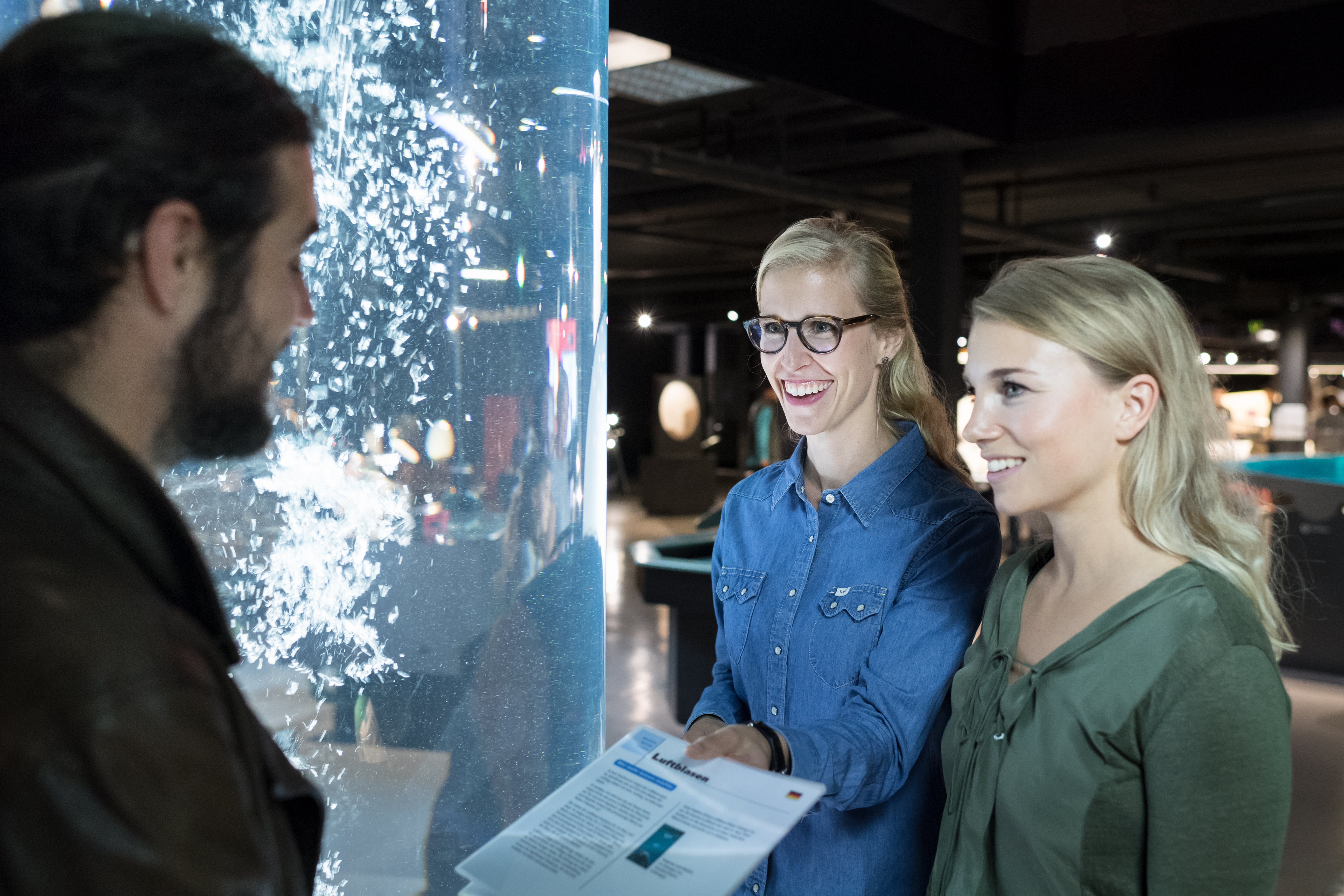Navigation auf uzh.ch
Navigation auf uzh.ch

What would science communication look like if the people who have so far ‚only’ been its recipients could shape it actively as ‘producers’? This is question, which has received little scientific interest so far, will be at the heart of our project.
In order to answer this question, we will cooperate with the Swiss Science Center Technorama, which pursues the goal of getting its visitors in touch with science via direct sensual encounters with natural phenomena. Even though the visitors play an active role here when compared to other museums, communication in the exhibition remains largely a one-way street: The text which accompany the hands-on exhibits at the Technorama describe and explain the experienced phenomena from a scientific perspective.
Our project intends to open up this one-sided form of communication. For this purpose, we will develop visitor workshops of about 45 minutes in which participants will be able to experience a specific natural phenomenon by means of a hands-on exhibit. Afterwards, they will be asked to draft texts in which they share their experience with other visitors. These texts will later be integrated into
the exhibition at the Technorama.
In addition, we will film these workshops (with the participants’ consent) and use the resulting video material to reconstruct the strategies visitors use to communicate about scientific phenomena by conversation analytic means. Finally, all workshop participants will be invited to a half day event on a weekend. Here, we will discuss the texts they have written so far and the video material of their discussions.
Based on this input and our conversation analytic expertise we will answer the following question empirically:
In addition, the participants of the weekend workshop will have the possibility of being involved in the development of a second phase of short workshops. This way, the short workshops can be adapted towards the real needs and wishes of the visitors.
Our project radicalises a current trend in the research on science communication by treating lay persons as people who can be active communicators in science communication instead of people who must first be educated (‘from deficit to dialogue’). In doing so, we will increase the visibility of linguistics in this research area and contribute to an emerging field of linguistic research, which is concerned with the role of embodiment and the role objects in science communication.
At the same time, our project enables citizens to get involved in science communication based on their individual experience. This also opens up new possibilities for the Technorama to radically rethink its role as an institution of science communication.
Wolfgang Kesselheim / Christoph Hottiger
University Research Priority Program Language and Space
Freiestrasse 16
8032 Zürich
Email: videogroup@spur.uzh.ch
Phone: 044 634 39 38
Seed Grant Participatory Science Academy:
https://www.pwa.uzh.ch/en/seedgrants.html
About Participatory Science Academy:
https://www.pwa.uzh.ch/en/aboutus.html
About the other approved projects:
https://www.pwa.uzh.ch/de/projects/2021.html